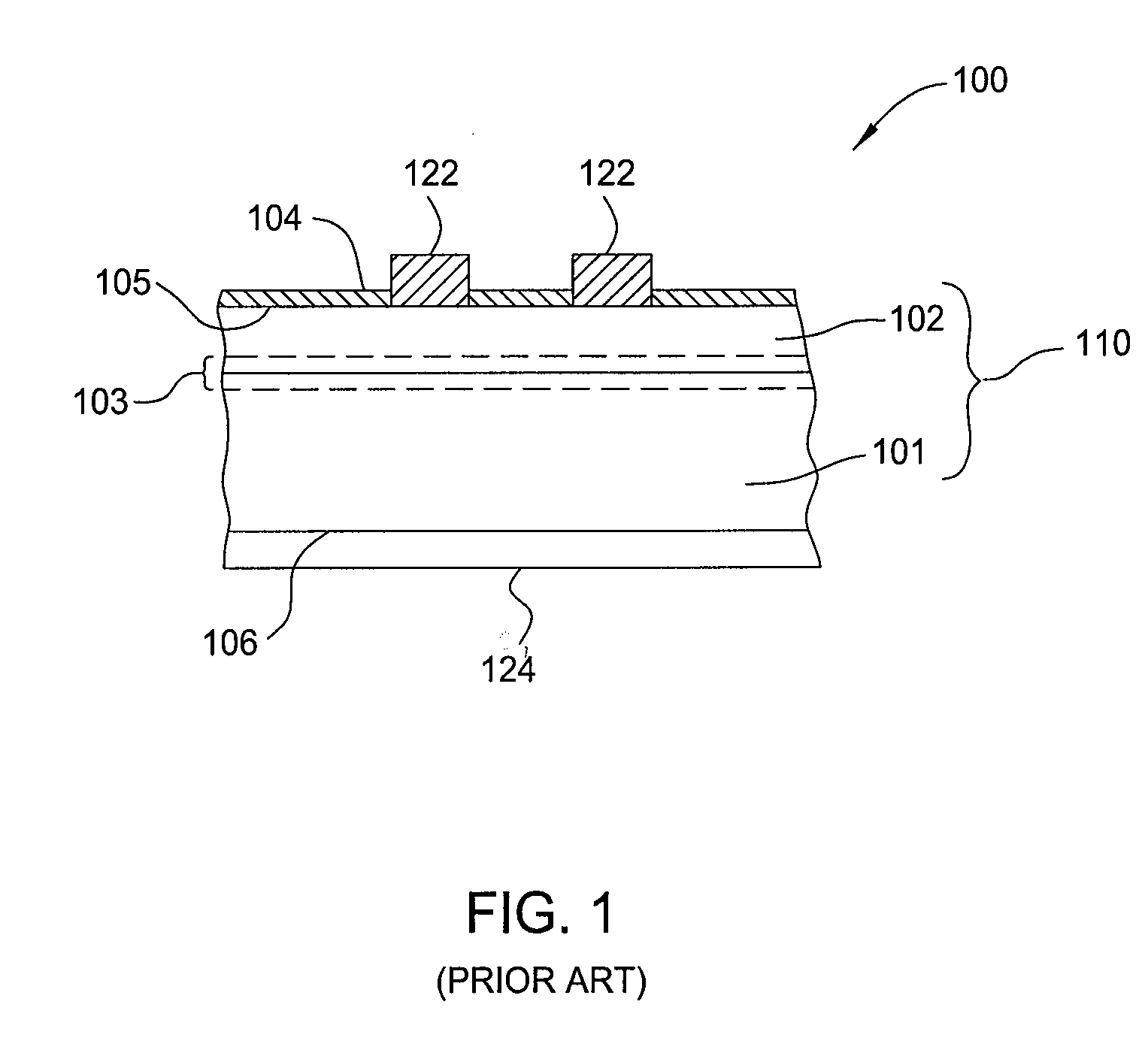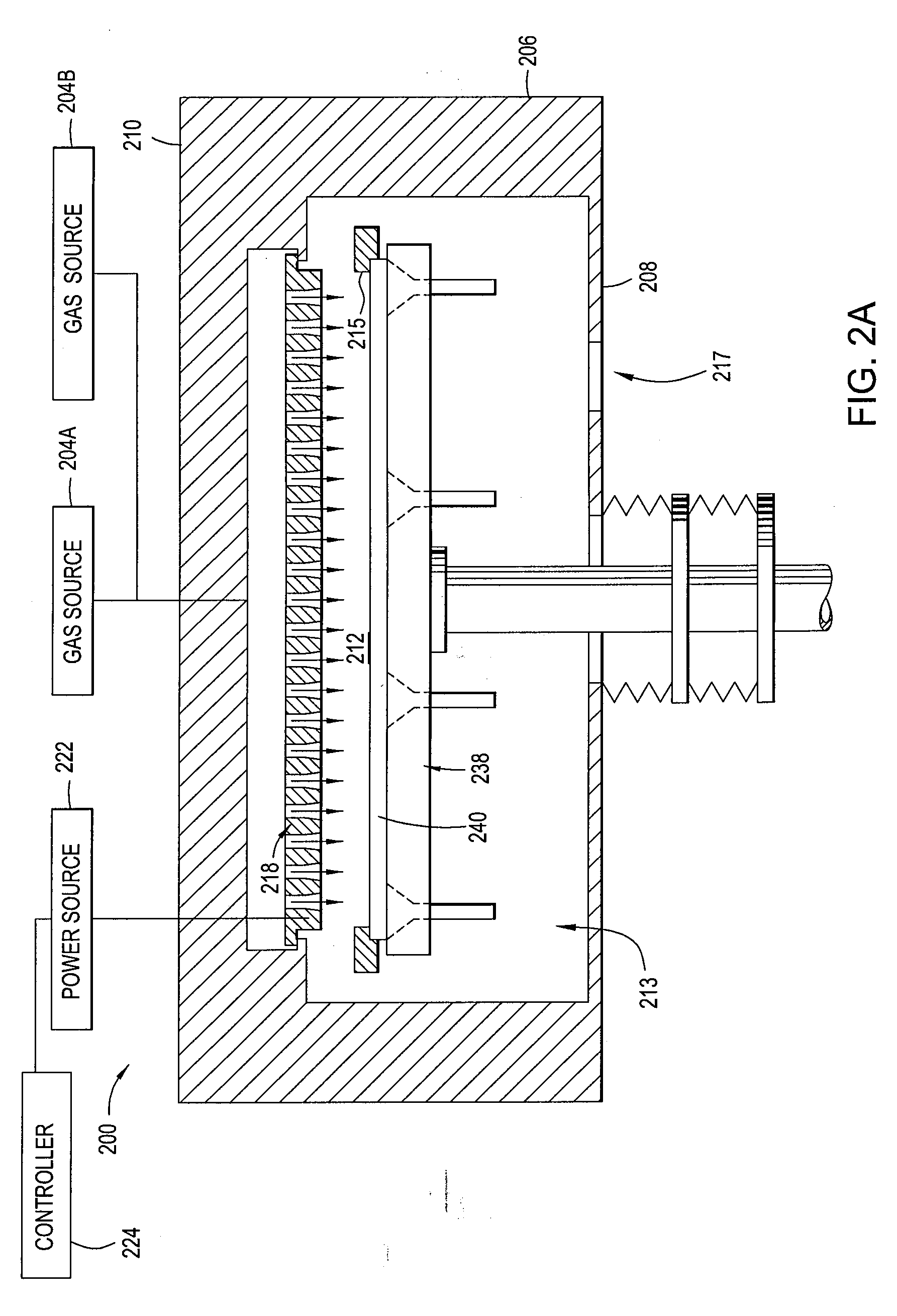Silicon carbide for crystalline silicon solar cell surface passivation
a technology of silicon carbide and solar cell, which is applied in the manufacture of semiconductor/solid-state devices, electrical equipment, semiconductor devices, etc., can solve problems such as reducing the efficiency of solar cells, and achieve the effect of improving minority carrier lifetime measuremen
- Summary
- Abstract
- Description
- Claims
- Application Information
AI Technical Summary
Benefits of technology
Problems solved by technology
Method used
Image
Examples
Embodiment Construction
[0023]Embodiments of the present invention generally provide methods for depositing a silicon carbide (SiC) passivation layer that may act as a high-quality passivation layer for solar cells.
[0024]FIG. 1 schematically depicts a standard silicon solar cell 100 fabricated on a wafer 110. The wafer 110 includes base region 101, which is typically composed of p-type silicon, an emitter region 102, which is typically composed of n-type silicon, a p-n junction region 103 disposed therebetween, and a dielectric layer 104. P-n junction region 103 is disposed between base region 101 and emitter region 102 of the solar cell, and is the region in which electron-hole pairs are generated when solar cell 100 is illuminated by incident photons. Dielectric layer 104 acts as an anti-reflective coating (ARC) layer for solar cell 100 as well as a passivation layer for the surface 105 of emitter region 102.
[0025]When light falls on the solar cell, energy from the incident photons generates electron-hol...
PUM
| Property | Measurement | Unit |
|---|---|---|
| thickness | aaaaa | aaaaa |
| thickness | aaaaa | aaaaa |
| thickness | aaaaa | aaaaa |
Abstract
Description
Claims
Application Information
 Login to View More
Login to View More - R&D
- Intellectual Property
- Life Sciences
- Materials
- Tech Scout
- Unparalleled Data Quality
- Higher Quality Content
- 60% Fewer Hallucinations
Browse by: Latest US Patents, China's latest patents, Technical Efficacy Thesaurus, Application Domain, Technology Topic, Popular Technical Reports.
© 2025 PatSnap. All rights reserved.Legal|Privacy policy|Modern Slavery Act Transparency Statement|Sitemap|About US| Contact US: help@patsnap.com



